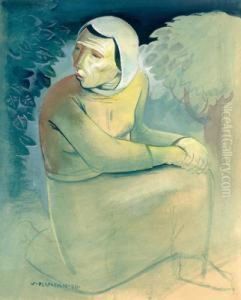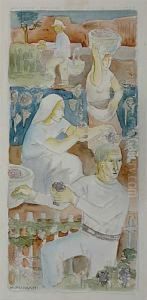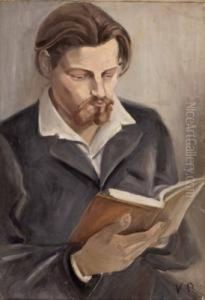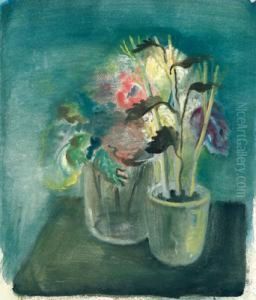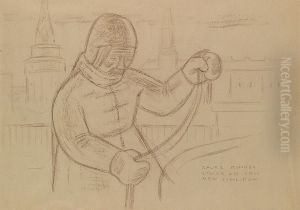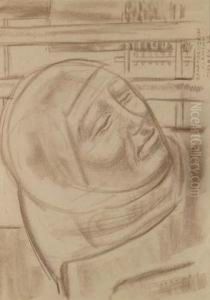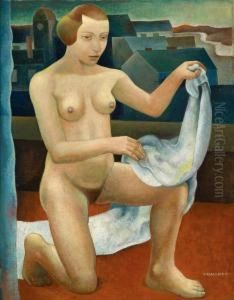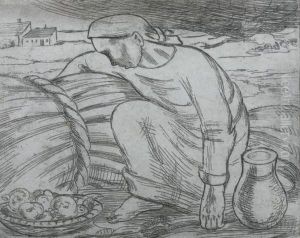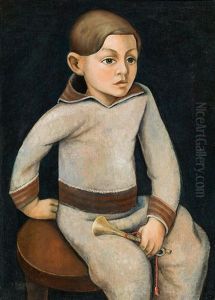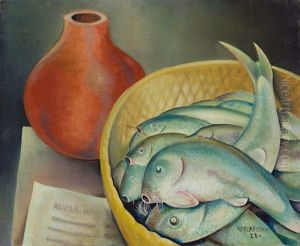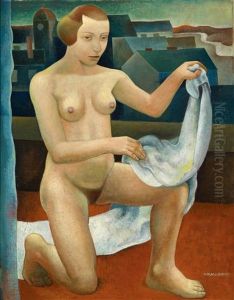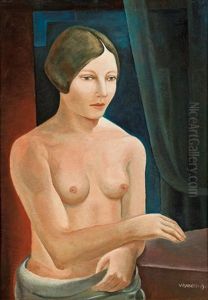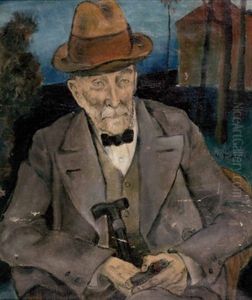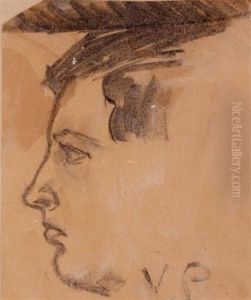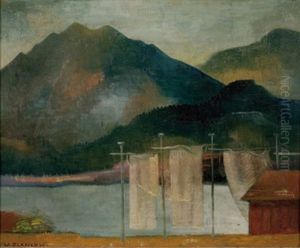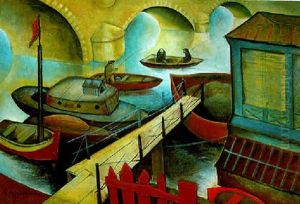Viktor Planckh Paintings
Viktor Planckh was an Austrian painter and graphic artist, whose career spanned the late 19th and early 20th centuries, a period marked by significant transitions in the art world. Born on July 25, 1887, in Vienna, Austria, Planckh was part of a generation of artists who witnessed the shift from traditional academic art to more modern and abstract movements. Despite the lack of widespread recognition during his lifetime, Planckh's work has gained appreciation for its contribution to the Austrian art scene of the early 20th century.
Planckh's artistic journey began at the Vienna School of Arts and Crafts, where he studied under the guidance of prominent figures such as Kolo Moser and Josef Hoffmann. This education grounded him in the principles of the Vienna Secession, a movement that sought to break away from the conservative styles prevalent in Austria's art institutions. The Secession's emphasis on artistic freedom and innovation deeply influenced Planckh's development as an artist, encouraging him to explore various styles and mediums.
Throughout his career, Planckh maintained a delicate balance between traditional craftsmanship and the avant-garde. His oeuvre includes landscapes, portraits, and still lifes, executed in a range of techniques from oil painting to woodcut printing. While Planckh's work did not radically deviate from the representational norms of his time, his experimentation with color and form displayed a subtle yet profound understanding of the changing artistic landscape.
Despite his talents, Viktor Planckh struggled with the socio-political upheavals of the early 20th century. The First World War and the subsequent economic difficulties in Austria adversely affected the art market, limiting Planckh's opportunities to exhibit and sell his work. Furthermore, the rise of more radical avant-garde movements in the interwar period overshadowed artists like Planckh, who remained attached to more traditional modes of expression.
Viktor Planckh passed away on March 22, 1945, in Vienna, just weeks before the end of the Second World War in Europe. His death marked the end of a career that, while not prominently recognized in the annals of art history, contributed to the rich tapestry of Austrian art. In recent years, there has been a renewed interest in Planckh's work, with art historians and collectors alike appreciating his unique blend of tradition and innovation. Today, Viktor Planckh is remembered as a skilled craftsman of his era, whose art continues to offer insights into the complexities of early 20th-century Austrian culture.
